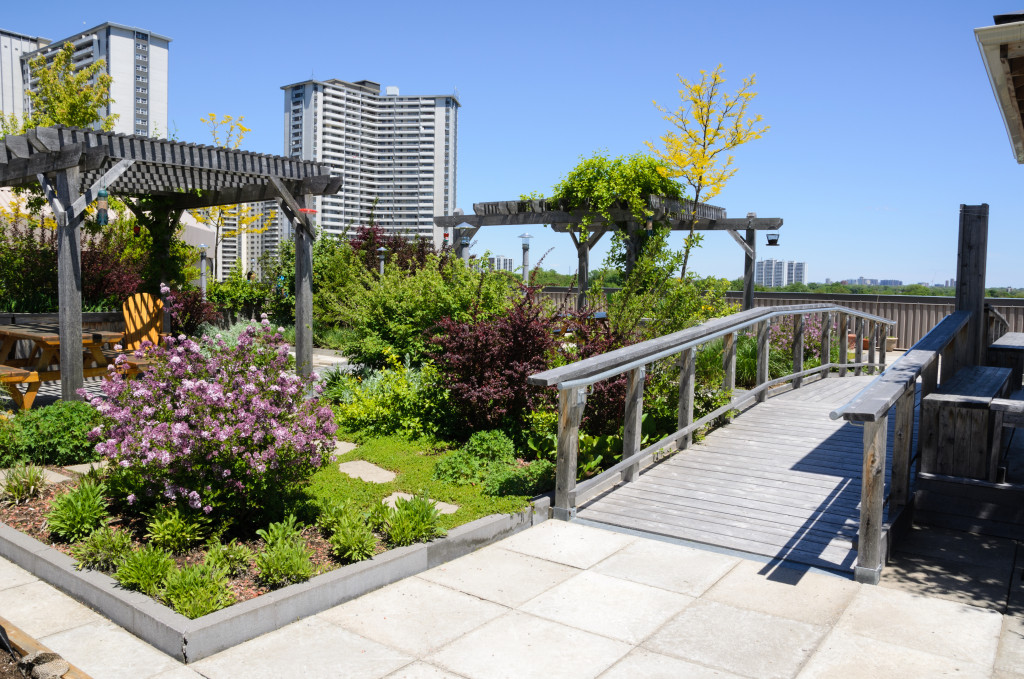Maintaining a beautiful landscape takes work. You need to be vigilant in watering, weeding, and pruning your plants. But it’s worth the effort because a well-maintained landscape can add beauty and value to your home. Here are some tips for keeping your landscape looking its best
Get Rid of Excess Trees and Bushes
A healthy, well-maintained landscape is a beautiful sight that can enhance your property’s curb appeal and add value to your home. But sometimes, a landscape can become overgrown, with too many trees and bushes crowding the area. It can be challenging to keep the landscape looking its best when this happens. Luckily, you can take some easy steps to get rid of excess trees and bushes. First, consider whether the tree or bush is causing any problems, such as crowding out other plants or blocking views. If it is not causing any issues, you may want to keep it. However, if the tree or bush is causing problems, it is probably best to hire tree trimming services to get rid of it. This will help clear the view and allow other plants and herbs to grow naturally. Once you have removed the excess trees and bushes, you can then focus on maintaining the health of your landscape by pruning existing plants and regularly watering them. You can ensure that your landscape will remain beautiful for years by taking these steps.
Water Your Plants Regularly
A beautiful landscape does not just happen. It takes time, planning, and effort to achieve the desired effect. One of the most important aspects of maintaining a beautiful landscape is regular watering. Depending on the type of plants in your landscape, they will need different amounts of water. Some plants, such as cactus, are very drought-tolerant and only need to be watered every few weeks. Other plants, such as ferns, require daily watering. By knowing your plants’ watering needs, you can ensure that they stay healthy and look their best.
In addition to knowing how often to water your plants, you also need to know how much water they need. Overwatering can be just as damaging as underwatering, so it is essential to strike the right balance. If you are unsure how much water your plants need, a good rule is to water them deeply but infrequently. This allows the roots to develop properly and helps prevent root rot problems. By following these simple tips, you can keep your landscape looking its best all season long.
Weed Your Garden Regularly
One important gardening task that is often overlooked is weed control. While weeding may not be the most glamorous job, it is essential for keeping your landscape looking its best. Left unchecked, weeds can quickly take over a garden, smothering other plants and causing them to die. Weeds also compete with other plants for water and nutrients, making it difficult for your landscape to thrive. By removing weeds regularly, you can help ensure your garden stays healthy and beautiful. Hand-pulling is often the best method for removing weeds, as it prevents the spread of seeds and ensures that the roots are completely removed. For larger areas, mechanical or chemical weed control may be necessary. However, it is essential to exercise caution when using these methods, as they can potentially damage other plants if misused. With a bit of time and effort, you can keep your landscape looking its best by regularly removing weeds.

Pruning Your Plants
Pruning is a vital horticultural practice that should be carried out on all ornamental and fruit-bearing plants. Not only does pruning help to control the size and shape of plants, but it also stimulates new growth and can even improve the quality of fruits and flowers. The main reason for pruning is to remove dead or diseased tissue, which can spread infections and pests throughout a plant. However, pruning can also be used to encourage new growth or to thin out crowded areas. The best time to prune most plants is late winter or early spring before new growth begins. However, it is essential to research the specific needs of each plant species before pruning, as some plants are more sensitive than others. However, pruning is not always easy, and it is vital to know how to prune your plants to avoid damaging them correctly. The first step is to identify the type of plant you are dealing with. Each type of plant has different pruning needs. Once you have identified the type of plant, you can then determine the best time of year to prune it. Timing is crucial because it can affect the amount of growth the plant experiences. Finally, when pruning, be sure to use clean, sharp tools. This will help to prevent infection and encourage healing. With care and attention, you can keep your landscape looking its best by regularly pruning your plants.
These are just a few tips for maintaining a beautiful landscape. You can keep your landscape looking its best for years by following these tips.

